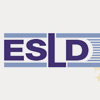Conferencies Summaries
Summaries & scientific literature updates
ESLD SESSION – KEY POINTS AND TAKE HOME MESSAGES
Fractional Drug Delivery: Improving Outcomes
by Merete HÆDERSDAL
- Level of evidence based on 16 preclinical and 18 clinical studies: Non Melanoma Skin Cancer (NMSC) IB; photodamage IB; scars IIA, topical anesthetics III, onychomycosis III
- Ablative fractional lasers at low settings favored skin depositions. For example, fractional CO2 settings were as follows: 10-20 mJ/MTZ and 6% density, while Fractional Erbium: YAG (AFXL Er:YAG) 2940 nm settings were 5-10 mJ/MTZ and 2-4% density
- In regards to (Intensified MAL-PDT) which is ablative fractional laser (AFXL) combined with red LED 3 hours after applying Methyl aminolevulinate (MAL): there are 8 RCTs on AKs (265 patients)which concluded that AFXL I-PDT is significantly more efficacious than PDT alone up to 12 months’ post-op with lower recurrence rates.
- Additionally, AFXL + daylight PDT was proven to be significantly more efficacious than conventional-PDT as well as Daylight –PDT alone with less pain. It can be specifically used for extra-facial areas as trunk and hands
- Interestingly, a case report showed total clearance of actinic keratoses AKs in the laser-assisted drug delivery (LADD) treated group versus Ingenol mebutate (IMB) alone.
- There was another article that studied Basal cell carcinoma (BCC) and Bowens disease that were treated with AFXL assisted 5-FU delivery (5 mJ/MTZ and 5% density). Results, after a single application under occlusion for a week , showed histologically confirmed clearance in 10 out of 14 BCC cases and all of the 16 Bowen patients)
AFXL CO2 is shown to give the best homogenous uptake when compared to ring curette, derma roller 200 μm, sand-paper 0.05 grains, and NAFL in a study done on healthy human volunteers. With regards to timing: the highest uptake potential was within the first 30 minutes after AFXL and then dissipates gradually over the next 6 hours; and just after 24-48 h, the uptakes goes back to normal similar to the other untreated areas. There are a couple of factors that might influence the uptake. For example, a thin coagulation zone (CZ) of-20 μm favored higher uptake in that study. Moreover, channel depth can make a difference, more specifically, 5-FU without micro-poration gave 0.2% uptake, a channel depth of 100μm resulted in 4.6%, 300 μm depth yielded 8.3% better uptake, 550 μm :9.4% (x 49) and 1500 μm deep channels was associated with 82 times better uptake...
And much more!
Want to read more? download the full article : click here & Join the ESLD!
Join the ESLD and become an active member of our organization.
Information, videos, tutorials, discussion, events... and much more!

